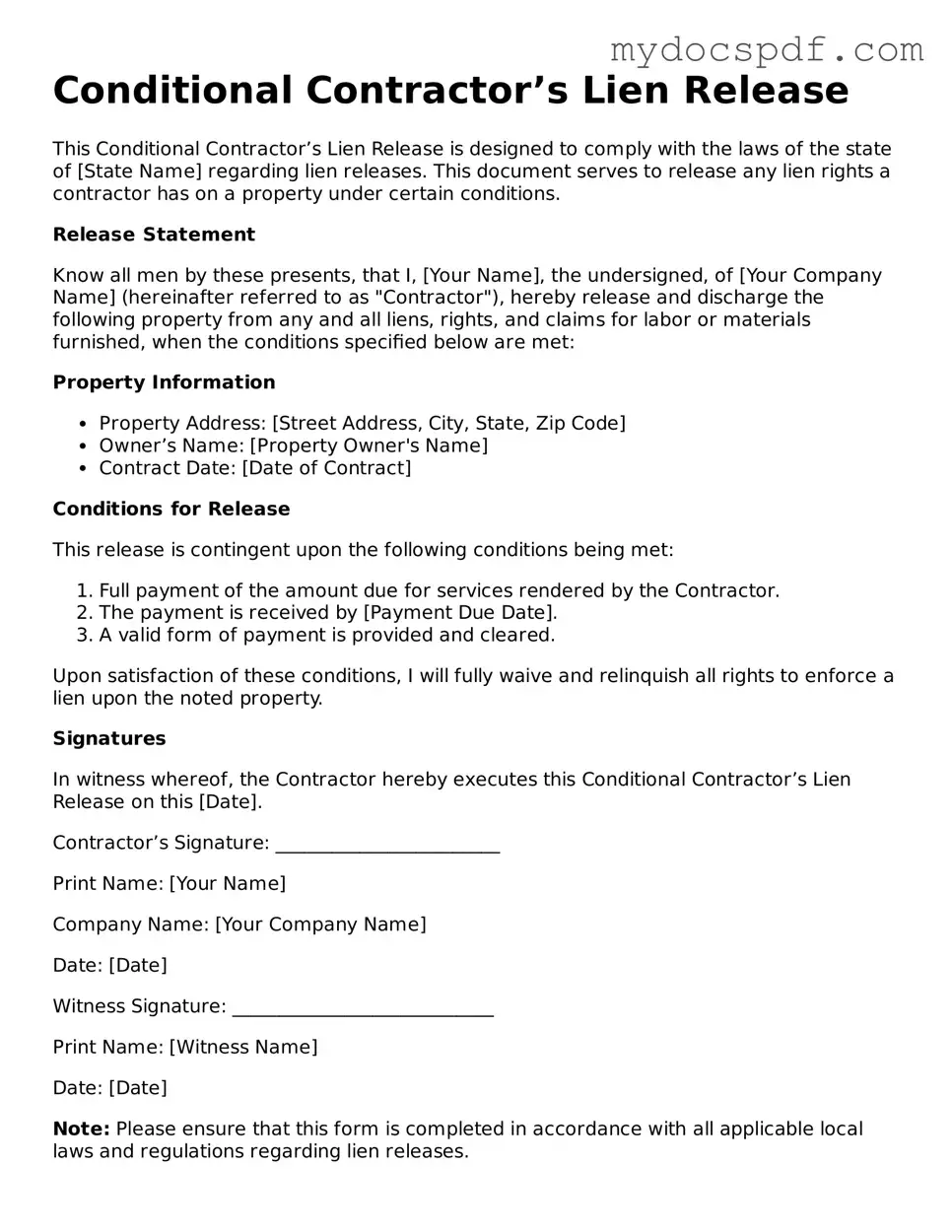Conditional Contractor’s Lien Release
This Conditional Contractor’s Lien Release is designed to comply with the laws of the state of [State Name] regarding lien releases. This document serves to release any lien rights a contractor has on a property under certain conditions.
Release Statement
Know all men by these presents, that I, [Your Name], the undersigned, of [Your Company Name] (hereinafter referred to as "Contractor"), hereby release and discharge the following property from any and all liens, rights, and claims for labor or materials furnished, when the conditions specified below are met:
Property Information
- Property Address: [Street Address, City, State, Zip Code]
- Owner’s Name: [Property Owner's Name]
- Contract Date: [Date of Contract]
Conditions for Release
This release is contingent upon the following conditions being met:
- Full payment of the amount due for services rendered by the Contractor.
- The payment is received by [Payment Due Date].
- A valid form of payment is provided and cleared.
Upon satisfaction of these conditions, I will fully waive and relinquish all rights to enforce a lien upon the noted property.
Signatures
In witness whereof, the Contractor hereby executes this Conditional Contractor’s Lien Release on this [Date].
Contractor’s Signature: ________________________
Print Name: [Your Name]
Company Name: [Your Company Name]
Date: [Date]
Witness Signature: ____________________________
Print Name: [Witness Name]
Date: [Date]
Note: Please ensure that this form is completed in accordance with all applicable local laws and regulations regarding lien releases.
